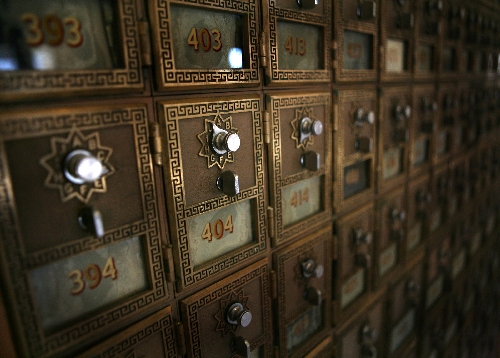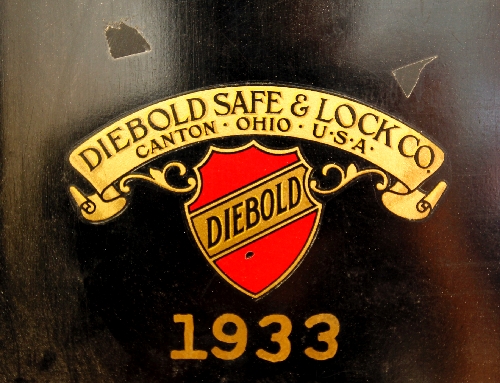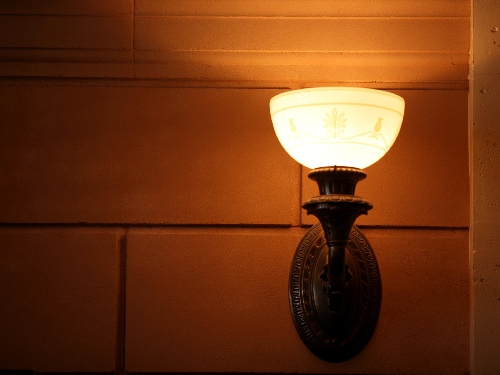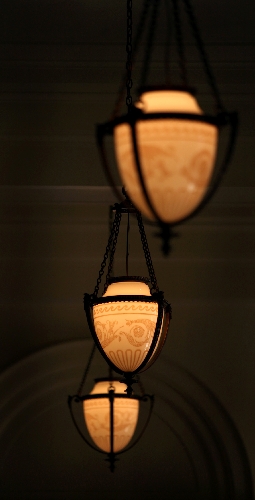Courthouse restoration will tell story of organized crime in Las Vegas
In 1950, U.S. Sen. Estes Kefauver's traveling anti-crime roadshow spent less than a day in Las Vegas before heading to larger cities that promised more attention to aid the politician's mob fighting crusade and national political ambitions.
The Tennessean's short Las Vegas visit left a lasting mark, though probably not the one he intended.
The hearing in the U.S. Post Office and Courthouse at 300 E. Stewart Ave., and similar events in 12 other cities, are credited with sparking a boom in legalized gambling and organized crime investment in Las Vegas that survived for decades and turned downtown and the Strip into a global attraction.
Now preservation architect Robert Chattel is supervising finishing touches to a restoration project he says is "the ultimate artifact" for the $42 million Mob Museum that uses the old courthouse as a setting for the story of organized crime in America.
"When people say, 'If these walls could talk,' these are the walls," Chattel said during a Wednesday tour of the federal building, which was dedicated in 1933.
COURTROOM IS CENTER STAGE
During the tour, Chattel freezes in the middle of the second-floor courtroom where Kefauver grilled witnesses and where cases involving mob figures such as Meyer Lansky and major Las Vegas casinos were argued.
He describes how guides will explain the stories to Mob Museum visitors before leading them to the darkened room where they will sit on the court's original wooden benches.
"The lights will go up and you will realize you are in the room where it occurred," Chattel said. "It gives me goose bumps just saying it."
The museum isn't scheduled to open until February, and the exhibits are still under construction at another location.
Chattel's work is to meticulously restore the building in a way that preserves the historic architecture, shows visitors what it was like in 1950 and adds modern amenities such as air conditioning, fire safety features and handicapped accessibility without crowding out the old-time vibe.
The setting means visitors will learn how the tentacles of organized crime stretched coast-to-coast from a place, Las Vegas, where mob factions from across America coalesced around the gambling industry.
What's more, the history will become more tangible in a building where key figures from the mob and law enforcement clashed.
The courtroom, for example, has been restored with cork flooring, repainted features sculpted in the moulding, re-created plaster light fixtures and tables and benches that were present when Kefauver's Senate Special Committee to Investigate Organized Crime in Interstate Commerce visited Nevada.
"There was a distinct smell in that courtroom, a combination of leather and, I don't want to call it cigar smoke, it was a real earthy smell," said John Mowbray, 60, of Las Vegas.
His father, former Nevada Supreme Court Justice John C. Mowbray, once worked in the building as a bankruptcy referee. "What I remember, too, was how high the ceiling was in proportion to the room. To me, it was a very special place."
Mowbray is on the board of directors of 300 Stewart Ave. Corp., the nonprofit that will run the museum, which was paid for with city, state and federal tax dollars.
He says placing the exhibits in the former federal building not only makes the history feel more immediate, it also puts the mobsters' stories on the good guys' turf.
"When you walk out of it, you will have a sense that at the end of the day law enforcement prevailed," Mowbray said.
THE RESTORATION
It has taken several years and millions of dollars for Chattel, president of Chattel Architecture Planning & Preservation Inc. of Sherman Oaks, Calif., to re-create the building.
Some features required extraordinary lengths to complete. The prominent, green exterior window frames, for example, were shipped to Denver for restoration, then returned and reinstalled.
Chattel said the deep green color was a matter of practicality, not taste.
"The closest paint store for the federal government was Hoover Dam," Chattel said of the massive dam under construction near Boulder City from 1931 to 1935. "And they had a lot of 'safety green.' "
Because old photos of the interior were shot in black and white, restorers had to use microscopic analysis of paint flecks to make the colors true to the period the museum highlights.
Imitation travertine columns were cut open to install fire and electrical systems and resealed to the original condition.
And to re-create the plaster light fixtures in the courtroom, restorers tracked down similar fixtures in a government building in Duluth, Minn., and had one removed to use as a template before returning it to its original location.
"It is amazing that the building survives, especially in a city where so little survives," Chattel said of the structure, which was a post office from dedication until 2005 and courthouse until 1965, in addition to being an all-purpose federal building.
In 1982 it was listed as "locally significant" on the National Register of Historic Places, in part for having "stylistic elements common to late 19th and early 20th century Neoclassicism favored by the Treasury Department for federal architecture."
In 2005 the listing was upgraded to one of "national significance" based on research done during the development of the Mob Museum.
That's because researchers were able to demonstrate that the Kefauver hearings helped drive organized crime deeper underground in many places, except Las Vegas.
MOB HEARINGS DROVE NEVADA
The presence of legalized gambling, combined with the glare of the Kefauver spotlight, prompted gangsters to pull up stakes and move to Nevada.
"They were just glad to be able to operate their business in the light of day and not out of some back room in Omaha, Neb., or Steubenville, Ohio," Mowbray said.
Later hearings in other states were also televised and attracted an estimated audience of 20 million to 30 million viewers, nearly 20 percent of the entire U.S. population at the time.
Although the Las Vegas proceedings weren't among those televised, the others provided plenty of dramatic testimony about money, power, the infiltration of businesses and institutions by organized crime and gambling.
The new buzz combined with more mob migration to Las Vegas resulted in more tourism and drove hundreds of millions of dollars of investment by organized crime in the casino industry.
The mob eventually was driven out of the legitimate gambling business, but not before planting the seeds that resulted in a multibillion-dollar industry on the Strip and a regulatory framework mimicked by countless other jurisdictions where legal gambling boomed from the late 1970s through today.
"Las Vegas is, historically speaking, a great central point from which to look at this broader national and international history," said Michael Green, a historian and College of Southern Nevada professor who contributed to the museum research.
"Kefauver's unintended consequence was he had an impact around the country and helped Las Vegas."
Contact reporter Benjamin Spillman at bspillman@reviewjournal.com or 702-229-6435.





















